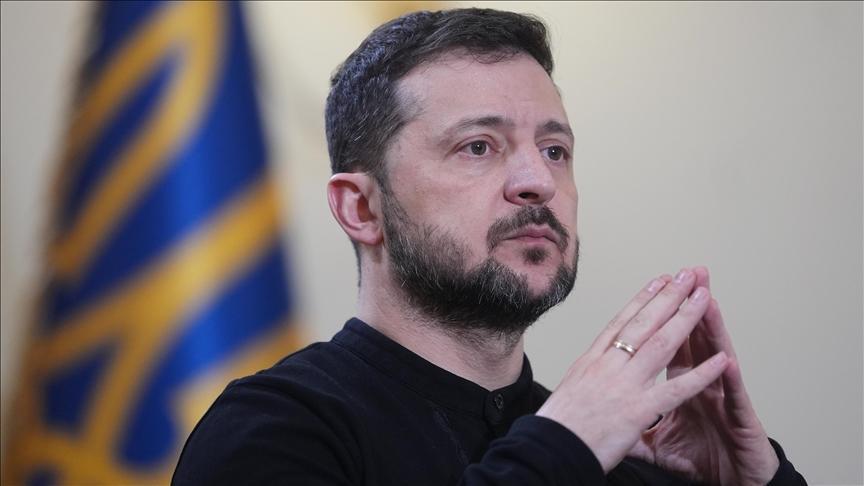Must-see sarcophagi in Turkish museums
ISTANBUL

The Ministry made the following 11 selections from the magnificent sarcophagi in the country, which depict the immortal details of life, history and art.
Sidamara Sarcophagus (Istanbul Archeology Museums): It was found in Ambar village on the Konya-Ereğli Karaman road and brought to the Istanbul Archeology Museums in 1901. The sarcophagus dates back to between the second and third century A.D. and is known as the heaviest sarcophagus in the world with its weight of 32 tons. There are two Eros figures on the sarcophagus and a hunting scene is depicted on the other long side of the sarcophagus.
Altınkulaç Sarcophagus (Troy Museum): It is dated to the beginning of the fourth century B.C. It was found in 1998 in a burial chamber in the Çingenetepe Tumulus in the Çan district of the western province of Çanakkale. The work is of great importance because the painted scenes on the marble sarcophagus are very well preserved. It is believed that the sarcophagus was built for an Anatolian dynasty that ruled there at the end of the fifth century B.C.
Alexander Sarcophagus (Istanbul Archaeological Museums): Found during the excavations carried out by Osman Hamdi Bey in the King Necropolis of Sidon in Lebanon in 1887. The sarcophagus, dated to the last quarter of the fourth century B.C., is thought to belong to Abdolonymos, one of the Kings of Sidon, not Alexander the Great. On one long facade of the sarcophagus, Greek and Persian soldiers are depicted at war against each other. The figure on the horse is Alexander the Great.
Hercules Sarcophagus (Konya Archaeology Museum): Unearthed during a construction work in Beyşehir Yunuslar (ancient city of Pappa) in 1958, this is the best example of the Hercules sarcophagus made in high relief technique ever found in Anatolia. Belonging to one of the notables of the ancient city of Pappa, the sarcophagus depicts a deceased person on one narrow side, and the mythology of the 12 works of Heracles on the other three faces.
The Sarcophagus of the Weeping Women (Istanbul Archaeological Museums): It was found in the excavations of Osman Hamdi Bey in the Sidon King Necropolis in Lebanon in 1887. It was named Crying Women because of the iconographic scene on the sarcophagus. It is thought that the sarcophagus, dating back to around 350 B.C., was made in the Classical Greek style and brought to Sidon after being produced in Athens or Rhodes workshops. Weeping women are placed on all its facades.
Achilles Sarcophagus (Adana Museum): The sarcophagus, which belongs to the group of Torre Nova (Sarcophagus of Asia Minor), bears the characteristics of the Late Antonine Period. The depictions on the front and side of the sarcophagus refer to the Trojan War in Homer’s “Iliad.”
Aurelia Botiane Demetria Sarcophagus (Antalya Museum): Aurelia Botiane Demetria is one of the prominent citizens who lived in the city of Perge in the second century A.D. It was taken out of Perge Western Necropolis by smugglers in 1997 and was seized by the security forces when it was about to be sold. On the long side of the sarcophagus, there are scenes describing three events between the Trojans and the Achaeans in the Trojan War.
Lycian Sarcophagus (Istanbul Archaeological Museums): This was found in 1887 during the excavations of Osman Hamdi Bey in Sidon King Necropolis in Lebanon. It is estimated to belong to one of the royal rulers in Sidon. Wild boar hunting is depicted on one of the long sides of the sarcophagus. Although the sarcophagus, dated to the fifth century B.C., was excavated from the King Necropolis of Sidon, it is called by this name because of its similarity with the Anatolian Lycian tomb monuments in form.
Eros Sarcophagus (Side Museum): Found in a mausoleum during the excavations in the Eastern Necropolis of the ancient city of Side between 1947 and 1966. It is shown among the important sarcophagi in which Eros are depicted in every direction. It is dated to the last half of the second century A.D.
Dionysiac Sarcophagus (Antalya Museum): It was discovered in the 2003 excavations in Perge. The sarcophagus, made of Pentelikon marble, has a cover with portraits of the dead. It can be dated to the second half of the third century A.D.
Polyxena Sarcophagus (Troy Museum): It was found in the Çanakkale Kızöldün Mound in 1994 during the excavation carried out after an illegal excavation. It dates back to the sixth century B.C. and is the earliest example of sarcophagi with figurative narration found in Anatolia. On one of its long sides, the sacrifice of Polyxena, the little daughters of the Trojan King Priam and Queen Hekabe, is depicted. For this reason, the work is called the Polyxena Sarcophagus.
















